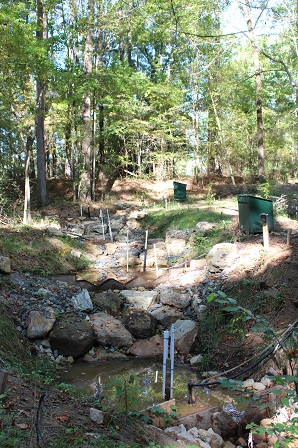North Carolina Sea Grant is helping the Town of Nags Head and its residents to identify future challenges from coastal hazards, as well as what can be done to adapt to these changes on the Outer Banks.
In early 2015, the Town of Nags Head began FOCUS Nags Head. This is a new planning initiative that will lead to a comprehensive plan and a unified development ordinance for the town.
To help inform one part of FOCUS Nags Head, the town asked North Carolina Sea Grant to assist its municipal staff, elected officials and residents to explore how coastal hazards, including sea-level rise, might affect the town’s infrastructure, economy and ability to provide services to its residents and visitors over the next 10 to 30 years.
Nags Head wanted to take an in-depth look at future challenges from coastal hazards, and to identify how the town could adapt to these changes. Officials also wanted to open this process to the public.
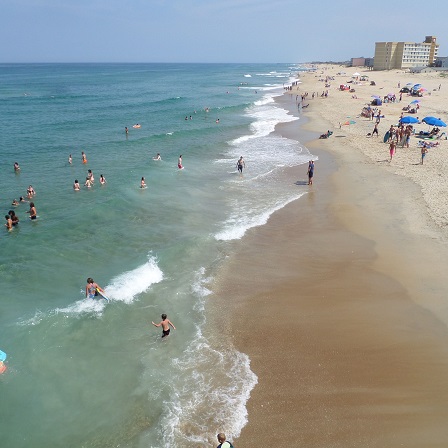
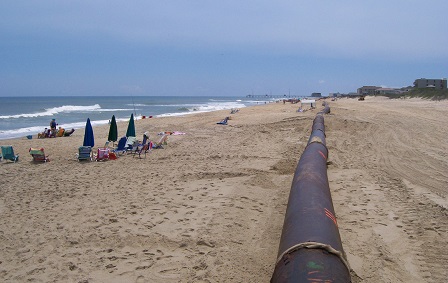
As our first step last summer, we evaluated the town’s current plans, assisted by students from the University of North Carolina at Chapel Hill and NC State University. Our team also interviewed local elected officials, town staff, residents and other decision makers.
We wanted to gauge their awareness of sea-level rise and climate change, and gather their thoughts on how these issues would affect the town in the short term. We also sought to identify their major concerns for Nags Head — looking 10 to 30 years into the future — with a focus on sea-level rise, and its hazards and impacts.
Generally, we found that the participants agreed that sea-level rise is happening, but some disagreed on its cause. They also saw a need to plan for these changes.
The results of the team’s research and interviews led to a facilitated workshop in December 2015.
Our colleagues — Jane Harrison, coastal economics specialist, and marine education specialist Terri Kirby Hathaway — helped with this process. In addition, individuals from Binghamton University in New York, Carolinas Integrated Sciences and Assessments, the University of North Carolina Coastal Studies Institute, or CSI, UNC-Chapel Hill, and NC State University assisted with the event.
CSI researchers Reide Corbett and J.P. Walsh explained the science of sea-level change. They used local data to explain sea-level and coastal changes as they related to Nags Head.
We reshaped a process known as the Vulnerability, Consequences, and Adaptation Planning Scenarios — or VCAPS — for use in the public meeting. VCAPS has been used in at least 15 locations nationwide, including in Plymouth (see Coastwatch Spring 2012) and Hyde County in North Carolina. The process helps local leaders and residents visualize and document their vulnerabilities to hazards and what actions they might take to become more resilient. For more information on the process, go to www.vcapsforplanning.org.
The VCAPS format gave residents and town staff a great structure to discuss the town’s vulnerability to hazards and share their ideas about adaptations that increase resilience. The workgroups highlighted what needs to be done in Nags Head in the next three decades in three major themes: maintain clean water, preserve their quality of life, and reduce marsh and oceanfront loss to erosion despite sea-level rise.
The participants’ discussions focused on the consequences of sea-level rise and potential actions that would reduce the negative impacts of those consequences.
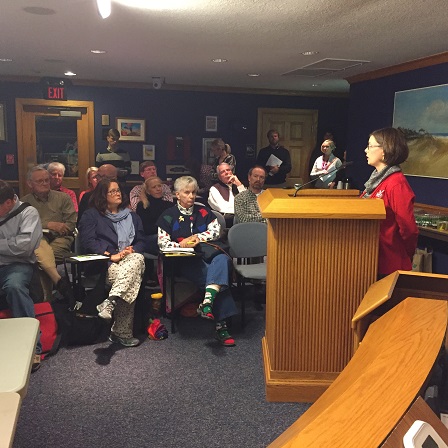
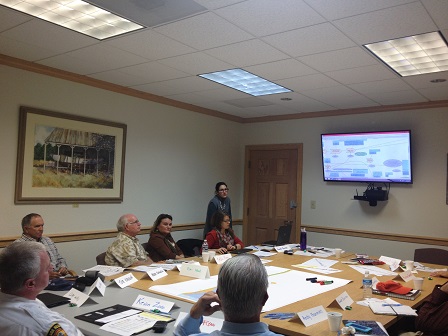
Participants described what a resilient Nags Head might look like over the next 10 to 30 years. They listed what they considered to be the top coastal hazards faced by the town, and ways in which the town and its state and federal partners might address potential problems.
Most of their concerns could be traced back to the quality and quantity of water — including groundwater, sound-side flooding, septic systems and beach management.
Participants called the natural environment Nags Head’s “lifeblood.” They felt a sense of obligation to protect, preserve and adapt to changes that coastal hazards, including sea-level rise, might bring to Nags Head.
Some actions discussed were ones that the town already has taken, such as enhancing septic systems and improving groundwater and surface water quality through its Septic Health Initiative.
In addition to encouraging Nags Head officials to continue to maintain ongoing programs, participants also suggested that the town improve the use of living shorelines, and conduct further studies to determine how much sea-level rise the town could sustain before public access, tourism and quality of life are affected.
Town leaders are committed to taking action to face future challenges and to collaboratively explore options for adaptation.
We are developing a report for the town based on the outcomes of the public session. Our goal is to outline the efforts that were highlighted during the discussions, as well as provide recommendations on next steps for the community leaders to address those concerns.
Working with the town has been tremendous. This proactive and thoughtful community is committed to making Nags Head more resilient for decades to come.
This story continues. We will keep you posted as we proceed on this journey.
Lisa Schiavinato is the coastal law, policy and community development specialist with North Carolina Sea Grant and co-director of the N.C. Coastal Resources Law, Planning and Policy Center. Jessica Whitehead is Sea Grant’s coastal communities hazards adaptation specialist.
This article was published in the Winter 2016 issue of Coastwatch.
For contact information and reprint requests, visit ncseagrant.ncsu.edu/coastwatch/contact/.
- Categories:


